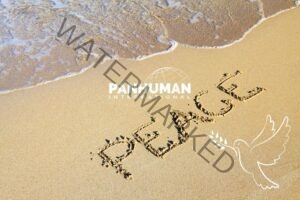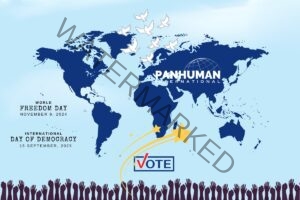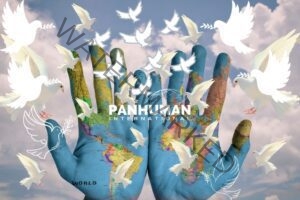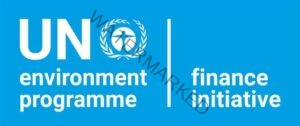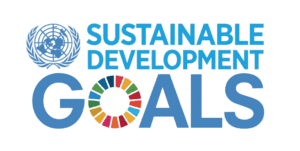 The 21st century confronts us with a profound challenge: to choose either the path of peace and disarmament or risk an era defined by relentless conflict and destruction. As global tensions escalate and the shadow of advanced warfare looms, the call to disarm is not only practical but existential. Every weapon constructed, every arsenal stockpiled, represents a decision—to foster fear and division or to dismantle the machinery of conflict for the sake of a shared future.
The 21st century confronts us with a profound challenge: to choose either the path of peace and disarmament or risk an era defined by relentless conflict and destruction. As global tensions escalate and the shadow of advanced warfare looms, the call to disarm is not only practical but existential. Every weapon constructed, every arsenal stockpiled, represents a decision—to foster fear and division or to dismantle the machinery of conflict for the sake of a shared future.
A World on Edge: The Global Conflict Dilemma
Recent history reveals a troubling trend: nations worldwide are bolstering military capabilities with unprecedented technological advancement. The growth of the global arms trade underscores a readiness to engage in large-scale conflicts, posing a direct threat to the fragile balance of international peace. We must recall that arms races, in any era, inevitably lead to catastrophe. Yet, the stakes have never been higher. In a world now stocked with nuclear, chemical, and biological weapons, the implications of even a single misstep are nothing short of apocalyptic. A Third World War, ignited by such forces, would leave devastation on an unimaginable scale, erasing boundaries and jeopardizing human survival itself.
Weapons of Mass Destruction: A Peril Beyond Borders
The specter of weapons of mass destruction casts a shadow over every peace effort. With thousands of nuclear weapons still in existence and chemical and biological arsenals at hand, humanity’s fate rests precariously on decisions made by only a few. The environmental and human toll of deploying even one such weapon would be irreversible, compromising generations. The prospect of World War III underscores the urgency of disarmament and the shift toward a global society that values life over leverage, unity over isolation.
Disarmament and Diplomacy: Interconnected Pillars of Peace
Disarmament is not merely a strategy but the foundation upon which true peace is built. International efforts led by the United Nations continue to play a crucial role, from peacekeeping missions to initiatives in conflict prevention, peacemaking, and peacebuilding. Yet, these actions require a global consensus to transcend national interests and reinforce peace as a shared human goal.
Disarmament needs the support of robust international diplomacy. Effective frameworks like the Arms Export Control Act (AECA) and various treaties aim to limit arms distribution, particularly to regions at risk. Diplomatic initiatives, including economic sanctions and arms embargoes, serve to prevent conflict escalation. However, genuine peace calls for more than containment. It demands a proactive approach that places disarmament at the heart of global policy—an imperative for security that all nations must embrace.
A Vision for Peace: The UN’s 2030 Agenda and Sustainable Development Goals (SDGs)
The United Nations’ 2030 Agenda and its 17 Sustainable Development Goals (SDGs) offer a roadmap for a more peaceful world. SDG 16, focused on “Peace, Justice, and Strong Institutions,” directly addresses the roots of conflict, emphasizing the role of equitable justice and reduced violence in achieving lasting peace. Equally, sustainable development goals like affordable energy (SDG 7) and climate action (SDG 13) are crucial in regions where conflict has devastated both infrastructure and natural resources, intensifying social and environmental challenges.
In fact, armed conflicts have direct impacts on sustainable development, interrupting progress, devastating local economies, and worsening environmental crises. If we aim to break the cycle of violence, we must address inequality, lack of education, and poverty, issues that the SDGs target to create stability. A world without war is not utopian but a byproduct of development strategies that place human welfare at the core of international policy.
The Global Arms Trade: A Driver of Discord
The global arms trade thrives, driven by profit and power, supplying volatile regions and intensifying existing hostilities. Nations embroiled in conflict acquire vast weapon stocks, creating conditions ripe for violence, leading to displacement and loss of life. By reducing the flow of arms into conflict zones, the international community can work to limit the escalation of violence and forge a more secure world.
A Call to Action: Peace as a Global Mandate
The road to peace is steep, but it is navigable. To prevent future generations from inheriting a world primed for war, we must pursue disarmament with relentless determination. The international community must come together to dismantle the systems of militarization, address the causes of conflict, and uphold peace as a shared global mandate. Our choice today will determine whether the narrative of the 21st century is one of continued division or one of unprecedented unity.
Disarmament is no longer a policy discussion but a moral imperative. We must acknowledge that every weapon of mass destruction, every military budget increase, and every arms trade deal is a choice made at the expense of future generations. To disarm is to honor the sanctity of life, to protect our planet, and to construct a future where peace is not an aspiration but a reality. Let us be the generation that not only dreams of peace but demands it—by choosing diplomacy, fostering development, and committing to the work of global disarmament. Only then can we secure a safer world, not just for today but for all who follow.
PANHUMAN INTERNATIONAL: For Peace. For Humanity. For Progress.



 The 21st century confronts us with a profound challenge: to choose either the path of peace and disarmament or risk an era defined by relentless conflict and destruction. As global tensions escalate and the shadow of advanced warfare looms, the call to disarm is not only practical but existential. Every weapon constructed, every arsenal stockpiled, represents a decision—to foster fear and division or to dismantle the machinery of conflict for the sake of a shared future.
The 21st century confronts us with a profound challenge: to choose either the path of peace and disarmament or risk an era defined by relentless conflict and destruction. As global tensions escalate and the shadow of advanced warfare looms, the call to disarm is not only practical but existential. Every weapon constructed, every arsenal stockpiled, represents a decision—to foster fear and division or to dismantle the machinery of conflict for the sake of a shared future.